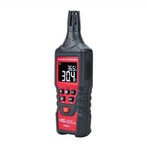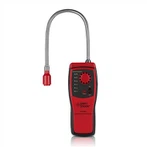Analyze the advantages and disadvantages of the practical functions of coating thickness gauges
With the rapid development of technology, there are more and more types of thickness gauges, which are widely used in many industries. The advantages of different thickness gauges are also different. The following editor will introduce the advantages and disadvantages of coating thickness gauges in detail.
Solvent free epoxy: Good mechanical properties, anti-corrosion function, and minimal environmental impact. The curing time is long, the multi-layer construction process is complex, and on-site construction is greatly affected by environmental factors, which can easily cause pinholes and make it difficult to meet quality requirements, resulting in poor wear resistance.
Epoxy fiberglass: Good mechanical function and anti-corrosion function. The multi-layer manufacturing process is complex, easily affected by the environment, and prone to interlayer pollution due to slow curing, which can affect the quality of layered bonding. Handmade manufacturing has poor density, so long-term use is prone to physical swelling, and the bonding strength with the base material is difficult to guarantee, especially for the lining fiberglass bonding strength.
Epoxy powder: good mechanical properties, bonding strength, and anti-corrosion function. Manufacturing facilities are expensive, complex, and not suitable for on-site construction, and are fragile.
100% solid content polyurethane: good mechanical properties, anti-corrosion function, bonding strength, coating impact resistance, and certain toughness, good anti-wear function, with little impact on the environment; Due to the inability to manufacture internationally, the material prices are currently high, the process technology requirements are high, and the spraying equipment technology requirements are high. Not suitable for single or small area anti-corrosion construction operations.
Solvent containing epoxy: good mechanical properties and anti-corrosion function. The curing time is long, the multi-layer construction process is complex, and on-site construction is greatly affected by environmental factors, which can easily cause pinholes and make it difficult to meet quality requirements, resulting in poor wear resistance.
Petroleum asphalt: simple process and low price. Poor adhesion, low coating strength, poor anti-corrosion effect, and significant environmental impact.
Epoxy coal tar: The anti-corrosion layer has good performance and is resistant to microbial erosion; Poor adhesion, pinholes, poor coating strength, poor resistance to cathodic peeling, slow curing, and environmental pollution.




